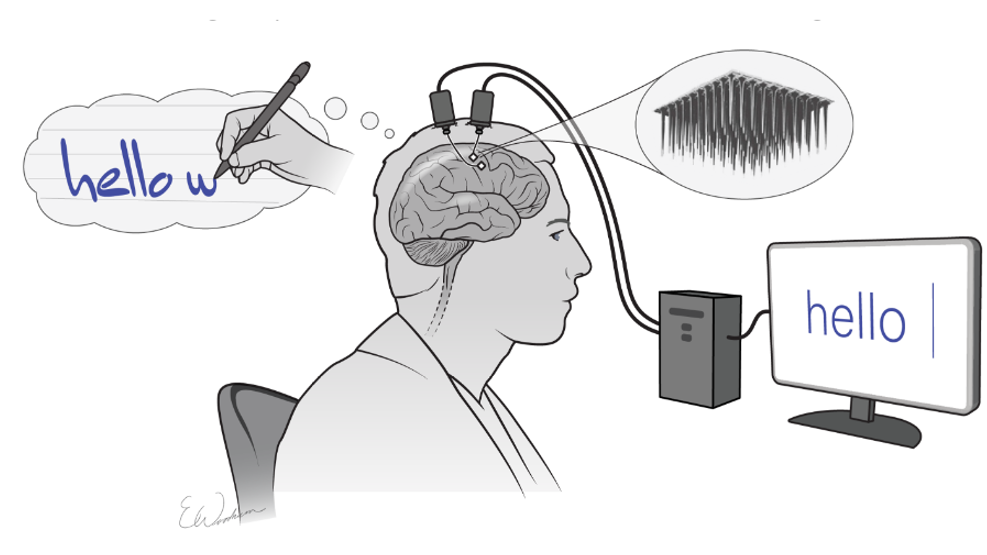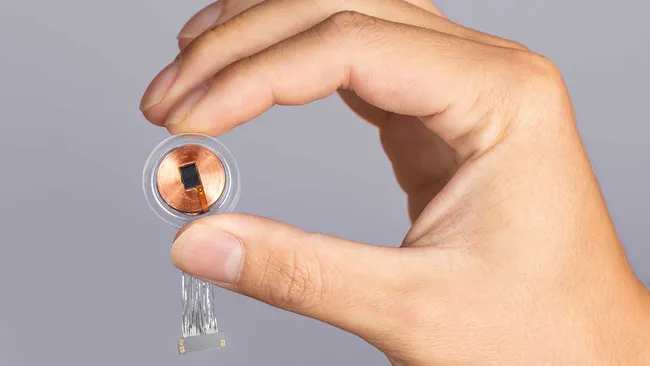Table of Contents
ToggleIntroduction
Elon Musk’s Neuralink has captured the public imagination with its ambitious goal of creating a brain-computer interface (BCI) – a device that bridges the gap between the human brain and computers. But what exactly is Neuralink, and is it science fiction or a glimpse into the future of human potential?
Stay up to date with breaking news about scientific developments in Neuralink brain interface by clicking here.

What is Neuralink?
Neuralink is a neurotechnology company developing a chip designed to be implanted into the human brain. This chip would contain thousands of tiny electrodes capable of recording and potentially stimulating neural activity. The idea is to allow a seamless flow of information between the brain and a computer, enabling control of external devices, enhanced sensory experiences, and potentially even artificial memory augmentation.

How Does it Work?
The Neuralink chip is a complex piece of technology, but the basic principle involves these steps:
- Implantation: A surgical procedure inserts the chip into a specific area of the brain.
- Neural Activity Detection: Electrodes on the chip pick up electrical signals from nearby neurons firing.
- Signal Processing: These signals are processed by a tiny computer within the chip and translated into digital information.
- Brain-Computer Interface: This digital information can then be used to control external devices or software applications.
Who is it Designed For?
Neuralink brain chip is currently in the early stages of development, and its primary focus is on potential medical applications. The initial targets could be individuals with neurological conditions like paralysis, epilepsy, or blindness. By interpreting brain signals, Neuralink function could help restore lost functions or provide alternative communication channels.

Undesirable Aspects and Safety Concerns
Neuralink faces several challenges and ethical considerations:
Safety: Brain surgery carries inherent risks, and the long-term effects of implanting a foreign object in the brain are still unknown.
Privacy: The ability to decode brain activity raises concerns about data privacy and potential manipulation of thoughts.
Accessibility: The high cost of such technology could create a significant disparity in access.
Ethical Concerns: The potential for cognitive enhancement or memory manipulation raises ethical questions about human augmentation.
What Does the Scientific Literature Tell Us About Neuralink?
Neuralinks research is ongoing, and published data is limited. However, some peer-reviewed studies in journals like Nature and Science discuss the technical feasibility of the device and its potential applications in restoring lost motor functions. Here’s a summary of relevant findings:
- Article: “Elon Musk’s Neuralinks Brain Chip: A Review on ‘Brain-Reading’ Device” ([This article is not a peer-reviewed source, but an analysis of Neuralink’s claims]), Nature Scientific Reports (2023). This analysis discusses the technical challenges of BCIs, including:
Biocompatibility: Ensuring the long-term safety of implanted devices in the brain tissue.
Signal Decoding: Accurately interpreting the complex electrical signals produced by the brain.
Scalability: Developing BCIs with enough electrodes to capture a comprehensive picture of brain activity. - Article: “Targeted neurotechnology restores walking in humans with spinal cord injury” (Wagner et al., 2018), Nature. This research, while not directly related to Neuralink, showcases the potential of BCIs for restoring lost motor function. The study demonstrates how electrical stimulation of the spinal cord can allow paralyzed individuals to regain some control over their legs. This offers promise for Neuralink’s potential application in helping individuals with paralysis.
- Article: “Active tactile exploration using a brain–machine–brain interface” (O’Doherty et al., 2011), Nature. This study explores the concept of brain-computer-brain interfaces (BBCI), where information is not just relayed from the brain to a computer but also back to the brain. The research demonstrates how monkeys can use a BBCI to control a robotic arm and receive sensory feedback through electrical stimulation, offering a glimpse into the potential future applications of BCIs for enhanced sensory experiences.
Future Potential Beyond Medical Applications
While the initial focus is on medical applications, the long-term vision of Neuralink is broader. Potential future applications include:
- Direct brain-computer communication: Imagine controlling computers, robots, or even prosthetics with your thoughts.
- Enhanced Learning: Neuralink could potentially facilitate faster information processing and knowledge acquisition.
- Augmented Reality: Imagine a seamless integration of digital information with your real-world perception.
Conclusion
Neuralink is a groundbreaking technology with the potential to revolutionize healthcare and human interaction with technology. However, significant hurdles remain in terms of safety, ethics, and accessibility. As research progresses, it will be crucial to have open discussions about the societal implications of this powerful technology.





